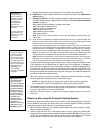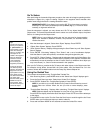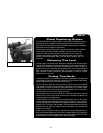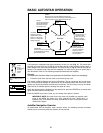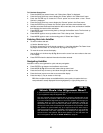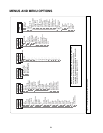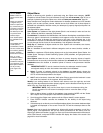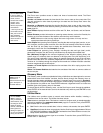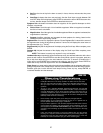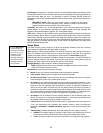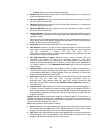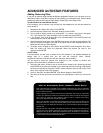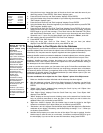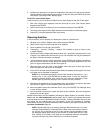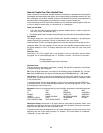
27
ܖ
Set: Enter the time of day for the alarm to sound, in hours, minutes, and seconds, then press
ENTER.
ܖ Start/Stop: Activates the alarm set previously. Use the Scroll keys to toggle between ON
and OFF.When ON is displayed, press ENTER to activate the alarm. When the alarm time
arrives, AutoStar beeps. Press ENTER to deactivate the alarm.
Eyepiece Calc calculates information about an eyepiece for the specific telescope to which
A
utoStar is connected.
ܖ Field of View: Scroll through a list of available eyepieces. When an eyepiece is selected,
the field of view is calculated.
ܖ Magnification: Scroll through a list of available eyepieces.When an eyepiece is selected, the
magnification is calculated.
ܖ Suggest: AutoStar calculates and suggests the best eyepiece for viewing, based on the
telescope and the object being viewed.
Brightest Star: If turned on, displays the phrase "Center Brightest Star" instead of the name of
the alignment star during the alignment procedure. If turned off, will display the actual name of
the alignment star (
e.g., "Sirius").
Brightness Adj: Adjusts the brightness of the display using the Scroll keys.When complete, press
ENTER.
Contrast Adj: Adjusts the contrast of the display using the Scroll keys. When complete, press
ENTER.
NOTE: This feature is usually only required in very cold weather.
Landmark Survey automatically slews the telescope to all user-defined landmarks with a short
pause at each location. Press ENTER to start the survey.While a slew is in progress, press any
key to skip that object and go to the next landmark on the list. To observe a landmark for a
longer period, press MODE when paused on the object to stop the survey. Press ENTER to
restart the survey at the first object on the list. See
LANDMARKS, page 37.
Sleep Scope is a power saving option that shuts down AutoStar and the telescope without for-
getting its alignment.With "Sleep Scope" selected, press ENTER to activate the Sleep function.
AutoStar goes dark, but the internal clock keeps running. Press any key, except ENTER, to
re-activate AutoStar and the telescope.
LX90 TIPS
Observing Considerations
• Try to pick an observing site away from street and house lights and car
headlights.While this is not always possible, the darker the site, the better.
•
Giv
e y
our e
yes about ten minutes to adjust to the darkness before observing.
Giv
e y
our e
y
es a rest from observing every ten or fifteen minutes to relieve
eyestrain.
• Try not to use a standard flashlight. Experienced observers use red LED
flashlights, the red utility light on the AutoStar handbox or tape red cellophane
over their flashlights to use for setup and map reading so they don’t have to
continually readjust their eyes to the darkness. Be careful not to shine bright
lights if there are other observers in the area. Do not shine a flashlight into the
telescope while someone is obser
ving!
•
Dress w
armly. It gets chilly when you’re sitting for prolonged periods.
• Practice setting up your equipment during the day or in a lighted area to
become familiar with it before going to a dark site.
•
Use y
our 26mm e
y
epiece to vie
w terrestr
ial objects and wider areas of space,
such as open star clusters
.
Use optional higher po
w
er e
y
epieces, such as a
9mm e
y
epiece (see
OPTIONAL A
CCESSORIES
, page 43 f
or more details), when
y
ou wish to vie
w something up close
, such as cr
aters on the Moon or the r
ings
of Satur
n.
•
Invite your friends and family to come and observe with you. But practice
locating 3 or 4 objects to sho
w them beforehand;if you have long delays, they
will become bored and lose interest.
Also, demonstrate how to focus the
telescope in a w
ell-lit area before you go to to the observing site.



